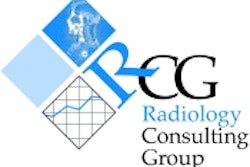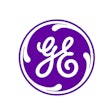It has been a mixed year for CT. On the one hand, the growth of multislice scanning applications has sparked new interest in a modality that was once seriously threatened by MRI. CT has also found a leading role in hybrid functional-anatomical imaging, as part of the combined CT/PET scanners that are now coming to market.
On the other hand, concerns over ionizing radiation dose, particularly in children, have cast a shadow over the modality -- one that physicists and radiologists alike are working to address. New ALARA (as low as reasonably achievable) scanning protocols have been created, tested, and disseminated. Manufacturers have taken their first steps toward automating low-dose image acquisition, efforts some say are long overdue.
Whole-body screening exams also generated controversy during the year, as proponents touted the exams as a revolutionary way to give patients control over their own healthcare. Opponents blasted the "overuse" of technology, questioning whether the information gleaned from the exams was worth the radiation dose. Some radiologists, it was said, saw only dollar signs.
Among CT vendors, one of the industry’s largest players, Marconi, was swallowed up by Philips in an acquisition completed in October. Philips will sell the Marconi systems -- which include one of the most advanced multislice scanners on the market -- under its own label.
Another acquisition, pending at press time, is GE's move to purchase electron beam CT vendor Imatron. The deal is expected to close at the end of this year.
Imatron
GE’s agreement to buy this South San Francisco, CA, company is a validation of Imatron’s pioneering work in coronary calcium scoring with EBCT technology. The deal will give the Waukesha, WI, imaging giant exclusive access to the only EBCT product line available on the market today.
Philips Medical Systems
Major changes are taking place in the product line of this Bothell, WA, vendor. Philips, which has relied on OEM relationships for its CT product line, will now have a home-grown source for CT, thanks to its purchase of Marconi Medical Systems of Cleveland.
The Marconi systems will be sold under the Philips label, according to the company. Philips plans to maintain its relationships with Hitachi and Analogic, which provide Philips with CT technology on an OEM basis.
Philips will focus the CT portion of its RSNA exhibit on Infinite Detector Technology (IDT), a new 16-slice configuration for the Mx8000 multislice scanner. More than 12 times faster than Marconi's four-slice version of Mx8000, the new system enables both faster scanning and new clinical applications.
The core of the IDT system is Tach, an application-specific integrated circuit (ASIC) mounted on the CT detector array. Tach directly converts x-rays to digital signals and transmits data at a rate of a GB per second, reducing noise and radiation dose.
Mx8000 IDT also supports cone-beam reconstruction algorithm (COBRA), in which data is acquired and reconstructed over a 3-D cone-shaped area rather than a 2-D slice. The technique improves image quality by reducing signal-to-noise ratio, and reduces dose. Philips believes that COBRA will lead to new advanced clinical applications, including rapid trauma evaluation, cardiovascular imaging, functional CT, isotropic neuro, multiphasic organ-specific scanning, and whole-body CT angiography (CTA).
Dose reduction is also the goal of another new Philips CT technology, IntelliBeam filtration and dose modulation. IntelliBeam delivers lower dose to infants and young children, while dose modulation reduces dose by up to 50% by controlling tube current, increasing signal over larger areas of anatomy and decreasing dose over small or air-filled areas.
In the realm of cardiac CT, HeartBeat-RT is a dual-parameter cardiac gating algorithm for Mx8000. The company claims that HeartBeat-RT will result in reproducible, motion-free multislice CT imaging for calcium scoring, coronary artery imaging, and functional analysis. The technique integrates R-trigger latency, compliance parameters, and scan window length to ensure that each cardiac phase that is imaged is the same in every heartbeat, thus eliminating motion and misregistration artifacts. HeartBeat-RT also automatically compensates to dynamic changes in heart rate during the scan, which can help reduce artifacts.
Philips will also demonstrate a new, upgraded workstation: MxView exp. The workstation is based on Dell Xeon hardware, and features a major boost in processing speed and memory over the older version of MxView.
Finally, Philips will demonstrate workflow tools designed to help radiologists deal with large multislice datasets. These tools include image-handling techniques like auto-distribution, auto-archive, real-time remote multiplanar reformatting (MPR), and seamless PACS integration. The company also has tools for virtual inspection and volume viewing of large acquisitions.
Toshiba America Medical Systems
Toshiba will showcase upgrades and enhancements to its Aquilion and Asteion multislice scanners. Real EC is an automatic exposure control method that uses the detector signal recorded during a scanogram to determine the average attenuation along the patient's body. A graph of the attenuation profile is displayed on the system’s monitor, and the data is used to modify the x-ray tube current (mA) as image data is acquired to keep the image noise constant. The technique can reduce dose by up to 40%, according to Toshiba, and is especially appropriate for pediatric, cardiac, whole-body, and CT angiography applications.
The company will also introduce new configurations for the multislice and single-slice versions of its Asteion scanner. Called Asteion Multi-Slice 60, Power Version, and Asteion Single Slice 60, Power Version, both versions feature a 60-kW generator and 6.5 million-heat-unit (MHU) x-ray tube. The multislice version will sell for about $1.08 million and the single-slice model for about $740,000. The new versions have FDA clearance and are available immediately.
Toshiba continues to make investments in multislice scanning technology, and will demonstrate its ability to acquire 16 slices simultaneously with 0.5-mm thickness per slice. The technique is pending FDA clearance.
A 256-row detector is also in the works for Aquilion and Asteion Multi. The detector will dramatically expand the area that can be scanned in a single rotation, according to the company. It is also awaiting FDA clearance.
By Brian Casey
AuntMinnie.com staff writer
November 14, 2001
Copyright © 2001 AuntMinnie.com



















